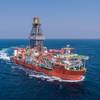Austal Ships has been selected to supply a fleet of 10 patrol boats to the Republic of Yemen, Ministry of Defence.
Based on a proven hullform, the 123 ft. (37.5 m) aluminium monohulls will provide the level of capability the Yemenis require in a reliable, simple to operate vessel that is easy to maintain.
The low risk that such a combination ensures is also being provided at a low acquisition cost for the purchaser, with the total contract price for the 10 vessels, spares, and a substantial package of training for 60 personnel coming in at well under $55 million.
The keys to achieving this highly cost-effective package are the efficient, high productivity design and manufacturing techniques that Austal has developed through the construction of more than 90 boats over 15 years. Another important contributor is that the vessels have not been over-designed and specified. Austal has put a great deal of emphasis on providing a patrol boat that delivers the capability the Republic of Yemen Navy requires – nothing more and nothing less.
Austal’s Sales and Product Development Manager, Mr Glenn Williams, said the vessels will re-define the whole concept of value-for-money in the global military and para-military patrol boat market.
“Until now the basic assumption of the marketplace has been that to get a well-built and equipped coastal patrol boat you had to turn to one of the ‘name’ specialist naval shipbuilders. For most nations the vessels produced by these shipyards are well beyond the scope of the available budget,” Mr Williams said.
This has typically forced buyers to choose between acquiring antiquated, second- or third-hand vessels or a very cheap new vessel from a second-rate supplier. Experience shows that either strategy involves significant risks of non-performance because the vessels are often ill-suited to the intended role, unreliable and difficult to maintain.
“More often than not new vessel ‘bargains’ are only available at such low prices because corners are cut, either in the vessel itself or in other important areas such as crew training and ongoing technical support,” Williams said.
“The vessels are typically either poorly designed, constructed using inferior materials and workmanship, or fitted with equipment that is often re-conditioned or not of an acceptable international standard. In the worst instances, all three may apply and be coupled with late delivery and budget over-runs.”
The end result is often that the desired patrol objectives cannot be achieved, either because the vessel does not meet the specified performance criteria or through unreliability leading to the fleet spending more time tied up than at sea.
The modern patrol boats that Austal Ships is supplying to Yemen provide a budget-conscious solution to a set of operational requirements that is common to many nations. These include:
General police missions in coastal waters;
Customs control and anti-terrorist operations at sea;
Offshore protection and tracking;
Surveillance of the Exclusive Economic Zone;
Defence and protection of national sea areas; and
Operations within integrated task forces.
“The package put together by Austal Ships will ensure that the Republic of Yemen Navy’s new patrol boat force will be capable of achieving tasks such as these for many years to come,” Mr Williams said.
Due to the high quality of its workmanship and commitment to quality, Austal is recognised as one the world’s leading aluminium shipbuilders and an established supplier to the international marketplace with vessels operating in every continent (except Antarctica).
“Coupling this to a large, talented, ISO 9000 quality certified design team and a globally operating service division, there is no doubt that Austal will provide Yemen with a well-built, well-engineered, well-supported patrol boat fleet,” Mr Williams said.
The all-aluminium patrol boat design selected by Yemen is a lower cost, less complex version of Austal’s 38 metre Bay Class design, eight of which have been operating successfully with the Australian Customs Service since being delivered between February 1999 and August 2000.
Tank testing and subsequent operational use has proved the excellent seakeeping and low resistance of the deep-V, single chine, semi-displacement hullform which, combined with the light but strong aluminium construction, will allow the vessels to achieve their contract speed of 29 knots with only moderate power.
The major propulsion system components are all being supplied by highly reputable international suppliers, with Caterpillar marine diesels driving fixed pitch propellers via Reintjes gearboxes. This twin screw propulsion system blends mechanical reliability and simple, efficient operation with ease of maintenance and is backed by the suppliers’ own well-established service and spares networks.
Other important equipment items are similarly based on widely available commercial-off-the-shelf (COTS) equipment, contributing to both low initial cost and long-term product support from their respective suppliers.
This includes the navigation, communication and control systems, many of which are fitted in the spacious wheelhouse. The bridge is arranged for three man operations and located for around-the horizon visibility and minimal motion, thus reducing fatigue.
Other principal onboard spaces include a dedicated operations room; ship’s office; laundry; separate mess areas for officers and crew; a well-appointed galley and adjacent food storage allowing the vessels to spend at least 14 days at sea on patrol without replenishment. A fresh water maker is fitted to supplement potable water supplies.
Based on an operating profile that foreshadows the vessels operating mostly at their cruising speed of 25 knots, the vessels have a range well in-excess of 1,000 nautical miles.
Each patrol boat will operate with a complement of 19, and will be equipped with a single berth cabin for the captain, a twin berth officers cabin, and four crew cabins (two 6-berth and two 2-berth).
The interior will be fitted to a high commercial standard, including the use of aluminium honeycomb panel, and has been arranged for maximum habitability taking into account vessel movement, noise, vibration and the flow of personnel when carrying out their shipboard duties. The onboard air conditioning has also been designed to provide a comfortable working environment, taking local climatic conditions fully into account.
In order to enforce local and international laws, within Yemen’s territorial waters, the patrol boats are to be fitted with a 25mm, twin barrelled naval gun and two heavy machine guns. Weapons lockers for the machine guns and small arms are fitted and ready use ammunition lockers will be located adjacent to each gun mounting.
Subscribe for
Maritime Reporter E-News
Maritime Reporter E-News is the maritime industry's largest circulation and most authoritative ENews Service, delivered to your Email five times per week










